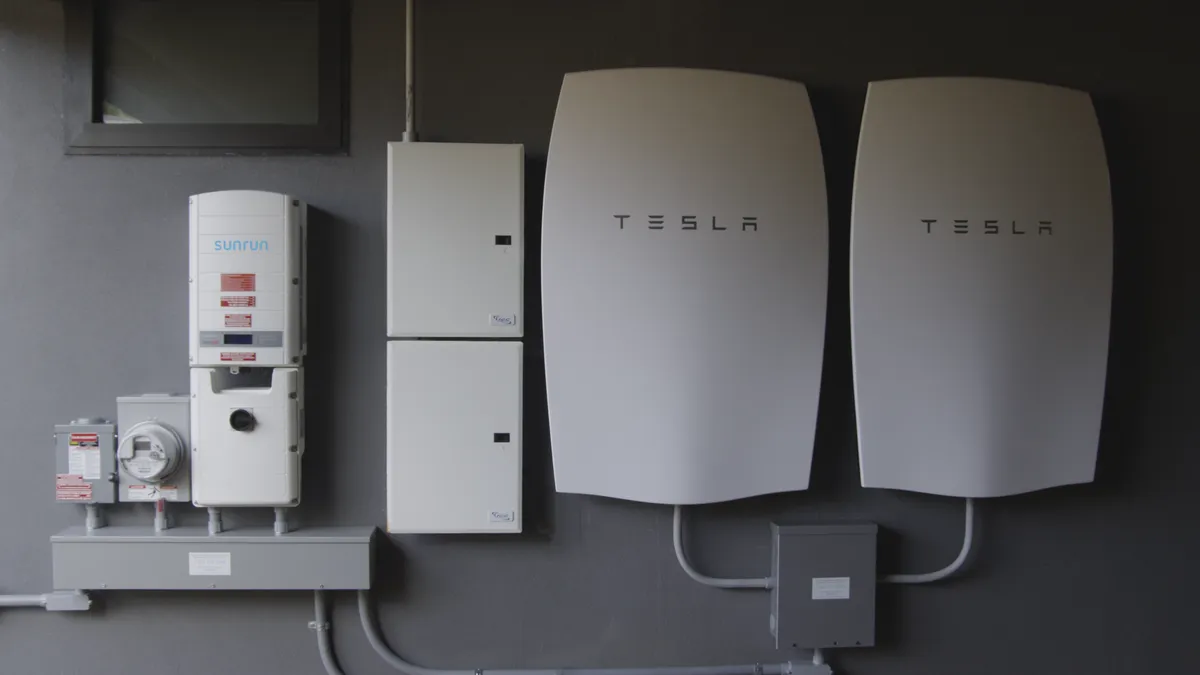Grid defection has become a much discussed topic in the energy storage world. It has been the subject of academic papers, including a recent paper by researchers from the University of Texas at Austin and another paper by researchers from the Rochester Institute of Technology, that examined the economics of combining energy storage with rooftop solar panels.
Those papers referenced an earlier 2014 paper on the Economics of Grid Defection by analysts at the Rocky Mountain Institute. The key points of the RMI paper were that solar-plus-storage technology has reached grid parity in some locations and continued technology cost declines will lead to wider adoption and, as a result, further utility “revenue decay” as customers reduce their reliance on the grid.
These changes are all happening within most utilities’ 30-year planning horizon, RMI said, and, therefore, grid defection could disrupt their business models and leave them with stranded investments in outdated assets.
The authors of all three papers say that while they are largely on the same page as their colleagues, there are important differences.
The RIT study found a more limited case for grid defection than did RMI, and the Austin paper noted that energy storage could increase energy consumption and undercut the environmental benefits of rooftop solar.
In a blog, James Mandel, a principal at RMI responded to some of the claims in the RIT paper. Chief among Mandel’s criticism is that the RIT researchers focused on present day costs and did not consider how those costs might change over the next decade. Mandel also says the RIT paper did not give sufficient consideration to a wider suite of distributed energy resources and use-cases.
As a result of those “framing” issues, Mandel says the RIT paper arrives as some mistaken conclusions. For instance, he challenges RIT’s idea that using the grid as a battery is the most economical choice for customers. It could be an economical choice for customers in the short term, but in a wider context the “grid battery” requires costly investments to maintain, such as investing and operating gas-fired peaking plants.
RMI also takes exception with the idea that utility ownership of solar panels or distributed energy resources is always the right option.
RIT argues utility ownership is most cost effective, but Mandel says that ignores RMI’s recent work on the value of flexibility and storage that makes clear that utilities, instead of owning or directly deploying DERs, can reap their benefits by passing the correct price signals to consumers and/or aggregators.
“The economics of grid defection matter, but the act of grid defection matters more."

James Mandel
Principal at Rocky Mountain Institute
Overall, Mandel says, the RIT paper misses the point that “grid defection matters today even if it is only economic in the future.”
“The economics of grid defection matter, but the act of grid defection matters more,” Mandel said in an interview.
Both the RIT and Austin papers also looked at less extreme use-cases than full blown grid defection. In a “minimize power” or self-consumption use-case where batteries are used to shift load between high and low power prices, the Austin researchers noted that, among other findings, battery storage starts with a handicap when used to arbitrage high and low power prices because of batteries’ roughly 15% loss in roundtrip efficiency, that is, energy is lost when charging and discharging a battery.
Mandel agrees that the economics of battery storage for time-based arbitrage need “pretty robust spreads to make the math work today.”
“Most of today's time-of-use retail prices don't meet that requirement; they are wide time bands and shallow differences,” Mandel said. In most cases, he says, it only makes sense to use a battery for self-consumption, if there are few other options, such as net metering, available.
Real world use-cases
The fact of the matter is that relatively few customers are looking to add storage to their solar systems in order to cut the cord with their utility. Grid defection is neither viable as an investment decision nor as a business model for most companies.
But some companies are exploring the possibilities of combining storage with rooftop solar panels. In Ontario, Alectra Utilities, the third largest municipal utility in North America, began exploring solar-plus-storage about a year and half ago through its Power.House pilot program.
Through the program, Alectra aggregates residential solar-plus-storage installations to create a virtual power plant. The original program, since expanded, encompassed 20 houses, each with a 5-kW solar array and 6.8-kW, 11.4-kWh lithium-ion battery.
Alectra owns and operates the Power.House installations and guarantees customers savings of $100 a month in exchange for an ongoing service fee and a $3,500 upfront payment. The company also promises customers that at least 50% of their energy storage capacity will be available as backup power.
The project, funded by Ontario’s Independent Electricity System Operator (IESO), is designed to maximize system benefits while meeting customer needs.
“It is difficult to make a business case for solar-plus-storage on a purely economic basis,” said Vikram Singh, manager of smart grid technologies at Alectra, “but, depending on the investment horizon, there are other elements to make it viable.”
“It is difficult to make a business case for solar-plus-storage on a purely economic basis...but depending on the investment horizon, there are other elements to make it viable.”

Vikram Singh
manager of smart grid technologies at Alectra
In this case, Alectra is looking at capturing benefits on both side of the meter. That could be “a difficult needle to thread,” Singh said. “There is not a lot of fat in that model,” but “with our future demand uncertainty it could be substantial soon, and this model allows us to plan for the future and capture those streams as they become more lucrative.”
“The next logical step,” Singh says, “is working with regulators to unleash those value streams.”
One more study
Alectra, in conjunction with Sunverge and the IESO, has just completed a study based on the Power.House program. But, unlike the more academic studies, the Alectra study uses real world solar-plus-storage data.
Conversely, the RIT and Austin studies used real world power usage data and ran it through computer models to simulate solar-plus-storage use-cases. The Alectra study, on the other hand, uses the data derived from the two dozen or so houses participating in the Power.House program and extrapolates those findings to 30,000 units.
For Alectra, its Power.House program is a way point, not an end point, and the study may, or may not, confirm the findings of the academic studies, but that is not the main point. The point of the study was to determine the long term value of a larger Power.House expansion. Singh says the study shows an expansion of the project to roughly 30,000 units could show positive benefits under the right circumstances.
In some ways that coincides with Mandel’s point. He sees grid defection as a real threat to the utility business model but not necessarily as a viable business model for the spread of energy storage, particularly if that model is locked into battery storage as the only viable technology.
“It is hard to negotiate with a monopoly service provider...if you don’t have an alternative to what the utility offers, you are not in a good negotiating position.”

James Mandel
Principal at Rocky Mountain Institute
“Batteries aren’t always the most cost efficient form of storage, period,” Mandel said. Electric vehicle chargers and water heaters can also store energy, he says, noting that “30% of loads in the United States have some degree of flexibility.”
The salient point when it comes to grid defection, Mandel said, is “if you want a transition, you should give customers some freedoms.”
“It is hard to negotiate with a monopoly service provider,” he said. “If you don’t have an alternative to what the utility offers, you are not in a good negotiating position.”






















